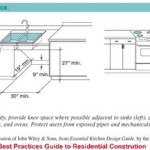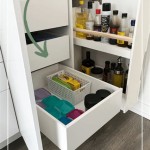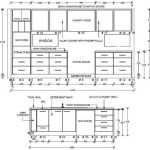Kitchen Cabinets in Perth Amboy, NJ: A Guide to Selection and Installation
Perth Amboy, New Jersey, with its rich history and diverse population, presents a dynamic market for home improvement, particularly in kitchen renovations. Kitchen cabinets are a pivotal element of any kitchen remodel, affecting both the aesthetic appeal and functional efficiency of the space. Navigating the selection and installation process requires a comprehensive understanding of available styles, materials, and local considerations. This article aims to provide a guide for residents seeking to upgrade their kitchens with new cabinets, outlining key factors to consider for a successful project in Perth Amboy.
The kitchen serves as a central gathering place in many homes, making its design and functionality vital for daily living. Cabinetry dictates storage capacity, organization, and the overall visual impression of the kitchen. A well-planned cabinet installation can significantly enhance the value of a home, improve its usability, and create a more inviting atmosphere for family and guests. This article delves into the various aspects of kitchen cabinet selection, from initial planning to final installation, offering insights to help homeowners make informed decisions.
Understanding Your Needs and Defining Your Style
Before embarking on the journey of selecting kitchen cabinets, it is essential to thoroughly assess your current kitchen space and identify your specific needs. This involves evaluating your existing storage situation, considering your cooking habits, and determining the style you wish to achieve. Analyzing your current kitchen's shortcomings will provide valuable insights into the type of cabinets that will best address your requirements.
Begin by taking detailed measurements of your kitchen. This includes the length of walls, height of ceilings, and the location of windows and doors. These measurements will be crucial when planning the layout of your new cabinets and ensuring a proper fit. Consider the flow of traffic within the kitchen and how a new cabinet configuration might improve efficiency and accessibility. Think about your workflow while cooking – where do you prep food, cook meals, and clean up? The placement of cabinets should facilitate a smooth and ergonomic workflow.
Storage needs are highly individual and depend on factors such as family size, cooking frequency, and the amount of kitchenware you own. Take inventory of your pots, pans, dishes, appliances, and other kitchen essentials. Determine which items you use frequently and which ones can be stored less accessibly. This assessment will help you decide on the types and sizes of cabinets needed. Consider incorporating specialized storage solutions such as pull-out shelves, spice racks, and drawer dividers to maximize storage efficiency. It is also important to factor in the long-term needs, anticipating potential changes in your family size or lifestyle.
Defining your style is another critical step in the planning process. Kitchen cabinets come in a vast array of styles, ranging from traditional to modern, and everything in between. Research different styles online, in magazines, and by visiting kitchen showrooms. Consider the overall aesthetic of your home and choose a cabinet style that complements the existing décor. Traditional styles often feature raised panel doors, intricate detailing, and warm wood tones. Modern styles tend to be minimalist, with clean lines, flat panel doors, and a focus on functionality. Transitional styles blend elements of both traditional and modern design, offering a versatile and timeless look. The style you choose will significantly impact the overall look and feel of your kitchen, so it’s important to select something you'll enjoy for years to come.
Exploring Cabinet Materials and Construction
The material and construction of kitchen cabinets significantly impact their durability, appearance, and cost. Understanding the different options available will help you make an informed decision that aligns with your budget and lifestyle. The primary materials used in cabinet construction include solid wood, plywood, particleboard, and MDF (medium-density fiberboard). Each material offers unique advantages and disadvantages in terms of strength, moisture resistance, and aesthetic appeal.
Solid wood is a premium material known for its beauty and durability. It is often used for cabinet doors, drawer fronts, and face frames. Solid wood cabinets can withstand heavy use and are resistant to scratches and dents. However, solid wood is also the most expensive option and can be susceptible to warping or cracking in high-humidity environments. Common wood species used for kitchen cabinets include maple, oak, cherry, and walnut. Each species has its own unique grain pattern and color, allowing for a wide range of aesthetic possibilities.
Plywood is an engineered wood product made from layers of wood veneer glued together. It is stronger and more stable than solid wood and is less prone to warping or cracking. Plywood is often used for cabinet boxes and shelves. It provides a solid and durable foundation for the cabinets. While typically less expensive than solid wood, the cost can vary based on the quality and thickness of the plywood. Look for plywood with a CARB (California Air Resources Board) compliance rating to ensure it meets environmental standards for formaldehyde emissions.
Particleboard is another engineered wood product made from wood chips and resin. While it is the least expensive option, it is also the least durable. Particleboard is susceptible to water damage and can swell or disintegrate if exposed to moisture. It is often used for cabinet boxes in lower-cost cabinets. Particleboard cabinets are generally not recommended for kitchens with high moisture levels or frequent spills.
MDF (medium-density fiberboard) is an engineered wood product made from wood fibers and resin. It is denser and more stable than particleboard and is less prone to warping. MDF is often used for cabinet doors and drawer fronts, particularly those with painted finishes. It provides a smooth surface for painting and is less likely to show the grain of the wood. MDF cabinets offer a good balance of affordability and durability.
In addition to the material, the construction of the cabinets is also important. Look for cabinets with solid construction techniques, such as dovetail joints, mortise-and-tenon joints, and sturdy hardware. These features will ensure that your cabinets can withstand the wear and tear of daily use. Consider the thickness of the cabinet walls and shelves. Thicker materials will provide greater strength and stability. Finally, pay attention to the quality of the hinges, drawer slides, and other hardware. High-quality hardware will ensure smooth and reliable operation for years to come.
Navigating the Installation Process in Perth Amboy
Proper installation is crucial for ensuring the longevity and functionality of your kitchen cabinets. Whether you choose to hire a professional installer or tackle the project yourself, understanding the installation process is essential for a successful outcome. The installation process involves several key steps, including preparation, demolition, assembly, and finishing.
Preparation is the first step in the installation process. This involves clearing the kitchen of all appliances, furniture, and other items. Protect your floors and walls with drop cloths and plastic sheeting to prevent damage. Before starting the demolition, turn off the water supply to the kitchen sink and disconnect any electrical wiring to appliances. Obtain all necessary permits. Perth Amboy, like many municipalities, requires permits for significant home renovations.
Demolition involves removing the existing cabinets and countertops. Use caution when removing the old cabinets to avoid damaging the walls or plumbing. Disconnect any plumbing or electrical connections carefully. Dispose of the old cabinets and materials properly. Many recycling centers accept used cabinets and building materials.
Assembly involves putting together the new cabinets. Most cabinets are shipped flat-packed and require assembly. Carefully follow the manufacturer's instructions for assembling the cabinets. Use quality screws and hardware to ensure a secure connection. Check that the cabinets are square and level before installing them.
Installation involves attaching the cabinets to the walls. Start by locating the wall studs and marking their location. Use a level to ensure that the cabinets are installed straight and plumb. Secure the cabinets to the wall studs with screws. Use shims to adjust the cabinets as needed to ensure they are level. Once the cabinets are installed, install the countertops, sink, and appliances.
Finishing involves adding the final touches to the kitchen. Install cabinet hardware, such as knobs and pulls. Caulk any gaps between the cabinets and the walls. Paint or stain the cabinets as needed. Clean up the kitchen and dispose of all debris. Double-check all connections to appliances and plumbing.
For homeowners who prefer a professional installation, hiring a qualified contractor is recommended. Research local contractors in Perth Amboy and check their credentials, experience, and references. Obtain multiple bids and compare pricing and services. A reputable contractor will have the necessary skills and experience to ensure a proper installation. They will also be familiar with local building codes and regulations. Be sure to have a clear written contract outlining the scope of work, timeline, and payment terms. Regular communication with the contractor throughout the project is essential for a smooth and successful installation.
Ultimately, selecting and installing kitchen cabinets in Perth Amboy requires careful planning, research, and attention to detail. Understanding your needs, exploring different materials and construction techniques, and navigating the installation process will help you achieve a beautiful and functional kitchen that enhances your home and lifestyle.

Whole Kitchen Cabinet Distributors New Jersey York Kitchens

Whole Kitchen Cabinet Distributors 23 Photos 11 Reviews 533 Krockmally Ave Perth Amboy New Jersey Cabinetry Phone Number Yelp

Whole Kitchen Cabinet Distributors New Jersey York Kitchens

Whole Kitchen Cabinet Distributors New Jersey York Kitchens

Amboy Cabinetry Request A Quote 563 Compton Ave Perth New Jersey Phone Number Yelp

Kitchen Cabinets In Perth Amboy Nj

Wow Cabinet Request A Quote 711 State St Perth Amboy New Jersey Kitchen Bath Phone Number Yelp

Whole Kitchen Cabinet Distributors 23 Photos 11 Reviews 533 Krockmally Ave Perth Amboy New Jersey Cabinetry Phone Number Yelp

77 Whole Kitchen Cabinets Perth Amboy Nj Cabinet Inserts Ideas Check More At H Hardware

Quality Cabinets For Your Home Save On
Related Posts








